Stream Health Estimation for the Plum Creek Watershed
Abstract
1. Introduction
2. Materials and Methods
2.1. Study Area Identification
2.2. Organization of Streamflow
2.3. Division of Flow Data Into Pre and Postalteration Periods
2.4. Appropriate Tools to Generate Stream Health Relevant Hydrologic Indices
2.5. Development of Flow Duration Curves (FDCs) and Estimation of Indices of Hydrologic Alteration (IHA)
2.6. Identification of Ecologically Relevant Hydrologic Indicators
2.7. Stream Health Estimation
2.7.1. Identification of the Presence/Absence of Stream Health Problem Using the Eco-Deficit and Eco-Surplus Method Facilitated by the FDCs
2.7.2. Detailed Stream Health Estimation Using the NATHAT-DHRAM Approach
2.8. Validation of Stream Health Estimates
3. Results and Discussion
3.1. Division of Flow Data into Pre- and Post-Alteration Periods
3.2. Preliminary Estimation of Existence/Absence of Stream Health Problem in the Study Area
3.3. Identification of the Stream Type and Analysis of the Hydrologic Indices Affecting Stream Health
3.4. Estimation of Overall Stream Health
3.5. Validation of the Estimated Stream Health Status
4. Summary and Conclusions
Author Contributions
Funding
Acknowledgments
Conflicts of Interest
Appendix A. Details on Identification of Change Point
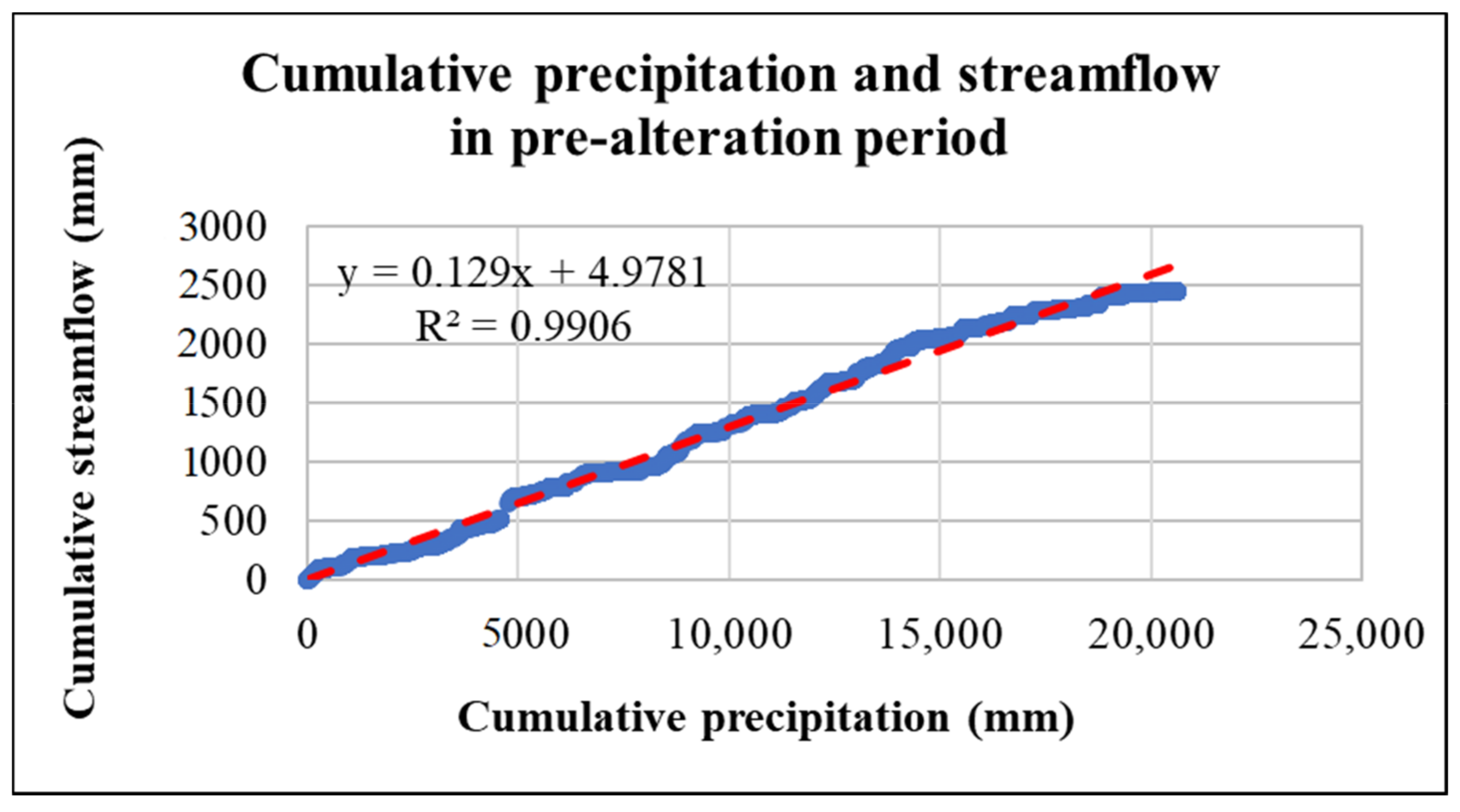
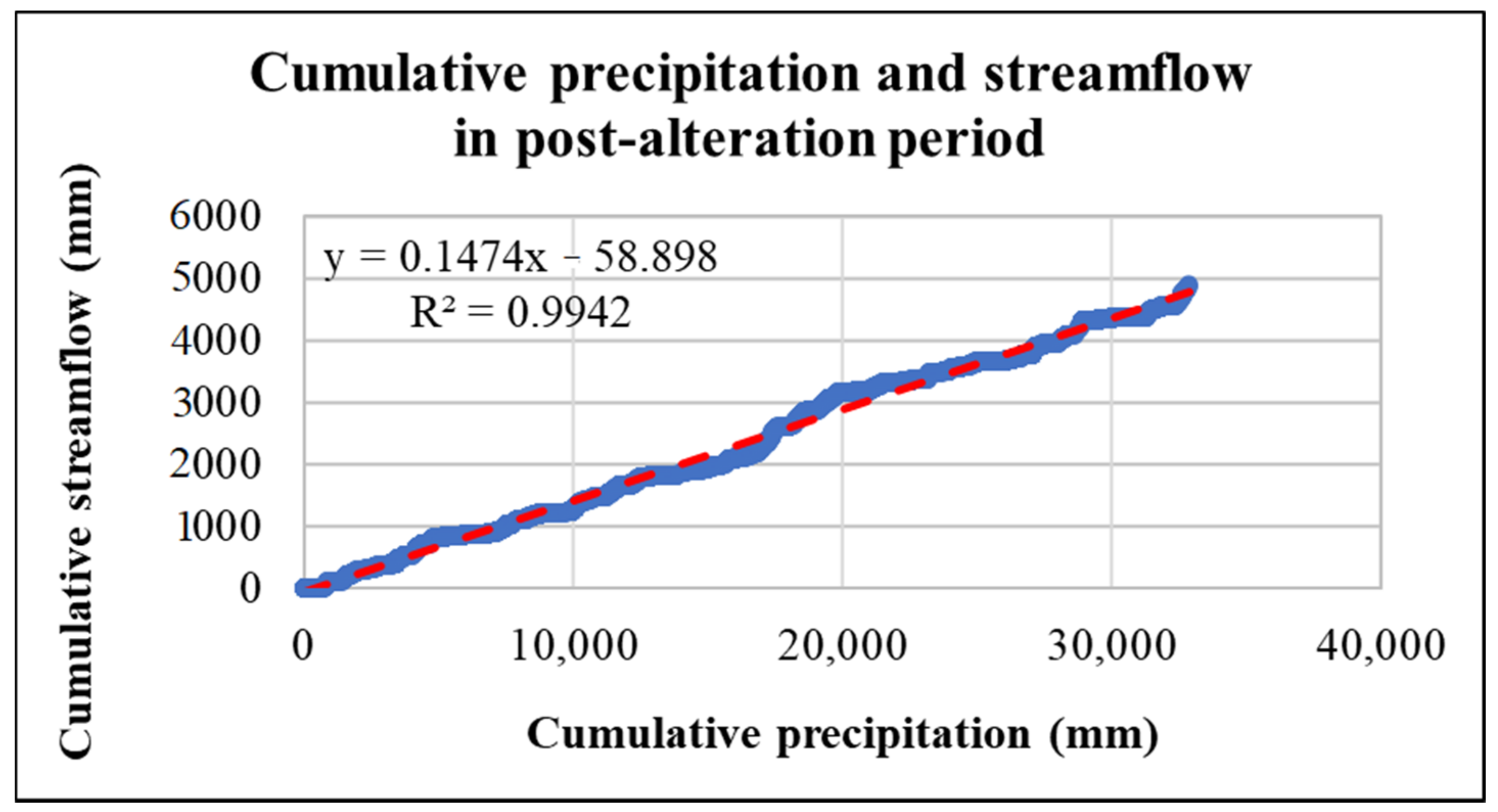
- (1)
- Computation of average of the entire time series of mean daily flows;
- (2)
- Estimation of deviation of individual flow values from the average (estimated above);
- (3)
- Cumulative total of quantities estimated in step 2;
- (4)
- Plotting of the quantities obtained in step 3;
- (5)
- Identification of change point showing the maximum deviation of daily average flow from the mean.
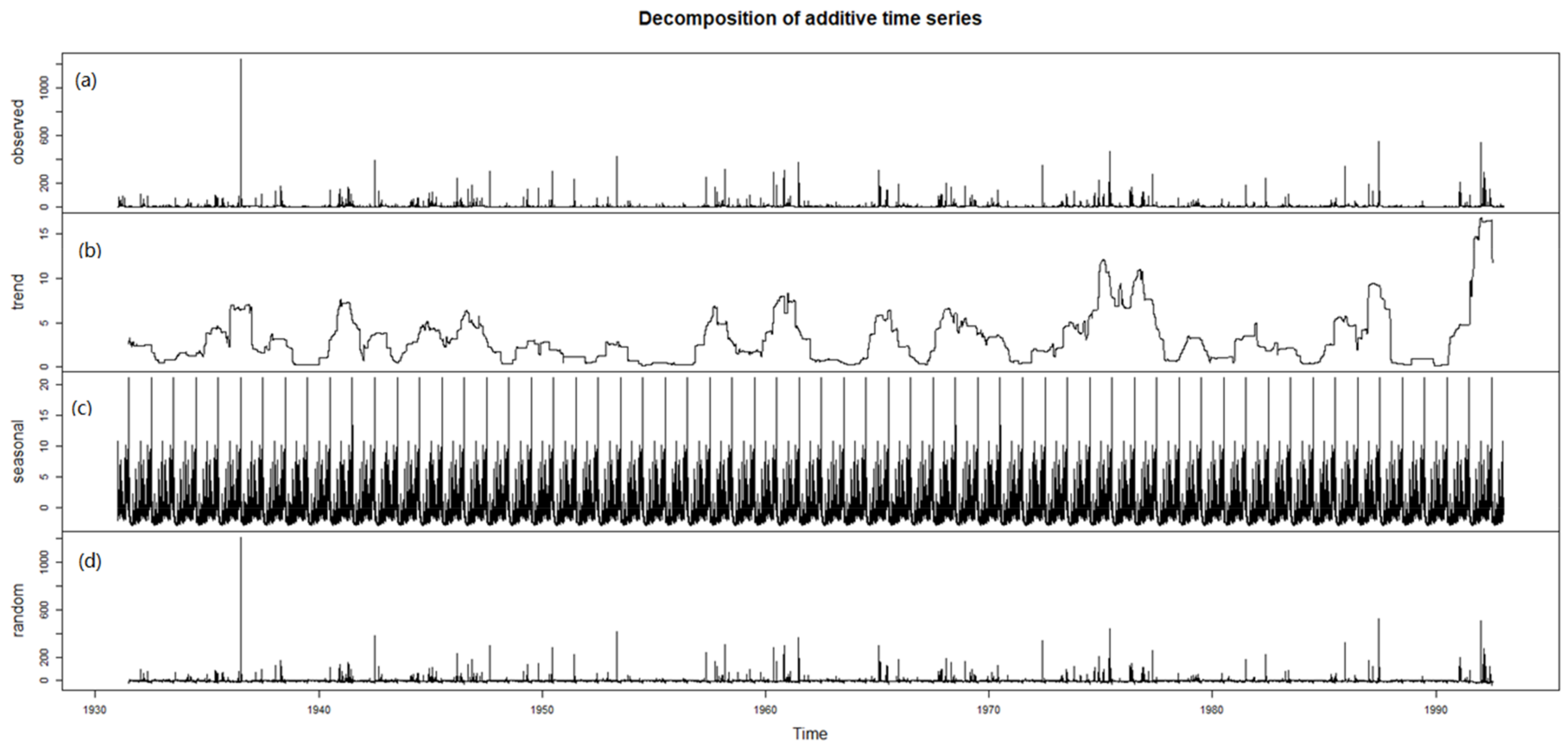
References
- USEPA. Available online: https://ofmpub.epa.gov/waters10/attains_nation_cy.control#STREAM/CREEK/RIVER (accessed on 4 June 2020).
- Hersh, E.S.; Maidment, D.R. Assessment of Hydrologic Alteration Software; A Report Submitted to Texas Water Development Board; Center for Research in Water Resources, University of Texas at Austin: Austin, TX, USA, 2006. [Google Scholar]
- Wang, L.Z.; Lyons, J.; Kanehl, P. Impacts of urbanization on stream habitat and fish across multiple spatial scales. Environ. Manag. 2001, 28, 255–266. [Google Scholar] [CrossRef] [PubMed]
- Nagy, R.C.; Lockaby, G.; Helms, B.; Kalin, L.; Stoeckel, D. Water Resources and Land Use and Cover in a Humid Region: The Southeastern United States. J. Environ. Qual. 2011, 40, 867–878. [Google Scholar] [CrossRef] [PubMed]
- Schoonover, J.E.; Lockaby, B.G.; Helms, B.S. Impacts of Land Cover on Stream Hydrology in the West Georgia Piedmont, USA. J. Environ. Qual. 2006, 35, 2123–2131. [Google Scholar] [CrossRef] [PubMed]
- Annear, T.C.; Conder, A.L. Relative bias of several fisheries instream flow methods. N. Am. J. Fish. Manag. 1884, 4, 531–876. [Google Scholar] [CrossRef]
- Lohr, S.C. Wetted Stream Channel, Fish Food Organisms, and Trout Relative to the Wetted Perimeter Inflection Method. Ph.D. Thesis, Montana State University, Bozeman, MT, USA, 1993. [Google Scholar]
- Harmsworth, G.; Young, R.; Walker, D.; Clapcott, J.; James, T. Linkages between cultural and scientific indicators of river and stream health. N. Z. J. Mar. Freshw. Res. 2011, 45, 423–436. [Google Scholar] [CrossRef]
- The Nature Conservancy. Indicators of Hydrologic Alteration—Version 7 User’s Manual; The Nature Conservancy: Arlington, VA, USA, 2007. [Google Scholar]
- IHA Software Download. Available online: https://www.conservationgateway.org/ConservationPractices/Freshwater/EnvironmentalFlows/MethodsandTools/IndicatorsofHydrologicAlteration/Pages/IHA-Software-Download.aspx (accessed on 4 June 2020).
- Cade, B.S. National Hydrologic Assessment Tool (NATHAT); U.S. Geological Survey: Reston, VA, USA, 2006.
- Tennant Donald, L. Instrem Flow Regimens for Fish, Wildlife, Recreation, and Related Environmental Resources; US Fish and Wildlife Service: Billings, MT, USA, 1975; p. 35.
- Tennant, D.L. Instream Flow Regimens for Fish, Wildlife, Recreation and Related Environmental Resources. Fisheries 1976, 1, 6–10. [Google Scholar] [CrossRef]
- Richter, B.D.; Baumgartner, J.V.; Wigington, R.; Braun, D.P. How much water does a river need? Freshw. Biol. 1997, 37, 231–249. [Google Scholar] [CrossRef]
- Richter, B.D.; Baumgartner, J.V.; Braun, D.P.; Powell, J. A spatial assessment of hydrologic alteration within a river network. Regul. Rivers Res. Manag. 1998, 14, 329–340. [Google Scholar] [CrossRef]
- Kannan, N.; Anandhi, A.; Jeong, J. Estimation of stream health using flow-based indices. Hydrology 2018, 5, 20. [Google Scholar] [CrossRef]
- Black, A.R.; Rowan, J.S.; Duck, R.W.; Bragg, O.M. DHRAM: A method for classifying river flow regime alterations for the EC Water Framework Directive. Aquat. Conserv. Mar. Freshw. Ecosyst. 2005, 15, 427–446. [Google Scholar] [CrossRef]
- Richter, B.D.; Baumgartner, J.V.; Powell, J.; Braun, D.P. A method for assessing hydrologic alteration within ecosystems. Conserv. Biol. 1996, 10, 1163–1174. [Google Scholar] [CrossRef]
- Poff, N.L. A hydrogeography of unregulated streams in the United States and an examination of scale-dependence in some hydrologic descriptiors. Freshw. Biol. 1996, 36, 71–79. [Google Scholar] [CrossRef]
- Olden, J.D.; Poff, N.L. Redundancy and the choice of hydrologic indices for characterizing streamflow regimes. River Res. Appl. 2003, 19, 101–121. [Google Scholar] [CrossRef]
- Plum Creek Watershed Partnership, 2018 Update to the Plum Creek Watershed Protection Plan, the Plum Creek Watershed Partnership. Available online: http://plumcreek.tamu.edu (accessed on 4 June 2020).
- Gao, Y.; Vogel, R.M.; Kroll, C.N.; Poff, N.L.; Olden, J.D. Development of representative indicators of hydrologic alteration. J. Hydrol. 2009, 374, 136–147. [Google Scholar] [CrossRef]
- Mann, H.B. Nonparametric tests against trend. Econometrica 1945, 13, 245–259. [Google Scholar] [CrossRef]
- Kendall, M.G. Rank Correlation Methods; Oxford University Press: New York, NY, USA, 1975. [Google Scholar]
- Pettitt, A.N. A non-parametric approach to the change-point problem. Appl. Stat. 1979, 28, 126–135. [Google Scholar] [CrossRef]
- Page, E.S. Continuous Inspection Scheme. Biometrika 1954, 41, 100–115. [Google Scholar] [CrossRef]
- Available online: https://www.sciencebase.gov/catalog/item/5387735ee4b0aa26cd7b5461 (accessed on 4 June 2020).
- Puckridge, J.T.; Sheldon, F.; Walker, K.F.; Boulton, A.J. Flow variability and the ecology of large rivers. Mar. Freshw. Res. 1998, 49, 55–72. [Google Scholar] [CrossRef]
- Du, K.; Xua, L.; Wu, H.; Tu, B.; Zheng, B. Ecophysiological and morphological adaption to soil flooding of two poplar clones differing in flood-tolerance. Flora 2012, 207, 96–106. [Google Scholar] [CrossRef]
- Arias, M.E.; Cochrane, T.A.; Norton, D.; Killeen, T.J.; Khon, P. The Flood Pulse as the Underlying Driver of Vegetation in the Largest Wetland and Fishery of the Mekong Basin. Ambio 2013, 42, 864–876. [Google Scholar] [CrossRef]
- Alford, J.B.; Walker, M.R. Managing the flood pulse for optimal fisheries production in the Atchafalaya River basin, Lousiana, USA. River Res. Appl. 2011, 29, 279–296. [Google Scholar] [CrossRef]
- Available online: https://www.tceq.texas.gov/waterquality/assessment (accessed on 19 January 2021).
- Wurbs, R. Monthly river flows in Texas for natural and developed conditions. Water Cycle 2021, 2, 1–14. [Google Scholar] [CrossRef]
- Anderson, A.A.; Hubbs, C.; Winemiller, K.O.; Edwards, R.J. Texas freshwater fish assemblages following three decades of environmental change. Southwest. Nat. 1995, 40, 314–321. [Google Scholar]
- National Register of Historic Places; United States Department of Interior, National Park Service: Washington, DC, USA, 2004.
- Poff, N.L.; Zimmerman, J.K.H. Ecological responses to altered flow regimes: A literature review to inform the science and management of environmental flows. Freshw. Biol. 2010, 55, 194–207. [Google Scholar] [CrossRef]
- Konrad, C.P.; Brasher, A.M.D.; May, J.T. Assessing streamflow characteristics as limiting factors on benthic invertebrate assemblages in streams across the western United States. Freshw. Biol. 2008, 53, 1983–1998. [Google Scholar] [CrossRef]
- Herbst, D.B.; Cooper, S.D.; Medhurst, R.B.; Wiseman, S.W.; Hunsaker, C.T. Drought ecohydrology alters the structure and function of benthic invertebrate communities in mountain streams. Freshw. Biol. 2019, 64, 886–902. [Google Scholar] [CrossRef]
- Elderd, B.D. The impact of changing flow regimes on riparian vegetation and the riparian species mimulus guttatus. Ecol. Appl. 2003, 13, 1610–1625. [Google Scholar] [CrossRef]
- NASEM. Riparian Areas: Functions and Strategies for Management, National Academy of Sciences, Engineering, and Mathematics; National Academic Press: Washington, DC, USA, 2002. [Google Scholar]
- The Shape of Healthy Streams, Department of Natural Resources, Minnesota. 2006. Available online: https://files.dnr.state.mn.us/publications/ecological_services/healthy_rivers_color_background.pdf (accessed on 4 June 2020).
- Mažeika, S.; Sullivan, P.; Watzin, M.C.; Hession, W.C. Understanding stream geomorphic state in relation to ecological integrity: Evidence using habitat assessments and macroinvertebrates. Environ. Manag. 2004, 34, 669–683. [Google Scholar] [CrossRef]
- Hunt, M.; Herron, E.; Green, L. Chlorides in Fresh Water; The University of Rhode Island Watershed Watch, Cooperative Extension, College of Environment and Life Sciences, University of Rhode Island, Kingston, URIWW 4. 2012. Available online: http://cels.uri.edu/docslink/ww/water-quality-factsheets/Chlorides.pdf (accessed on 4 June 2020).
- Granato, G.E.; DeSimone, L.A.; Barbaro, J.R.; Jeznach, L.C. Methods for Evaluating Potential Sources of Chloride in Surface Waters and Groundwaters of the Conterminous United States; Open File Report 2015-1080; United States Geological Survey: Reston, VA, USA, 2015.
- Coles, J.F.; Cuffney, T.F.; McMahon Gerard Beaulieu, K.M. The Effects of Urbanization on the Biological, Physical, and Chemical Characteristics of Coastal New England Streams; U.S. Geological Survey Professional Paper 1695; USGS: Reston, VA, USA, 2004; p. 47.
- Granato, G.E. Methods for Development of Planning-Level Estimates of Stormflow at Unmonitored Sites in the Conterminous United States; Federal Highway Administration FHWA–HEP–09–005; Federal Highway Administration: Washington, DC, USA, 2010; p. 90.
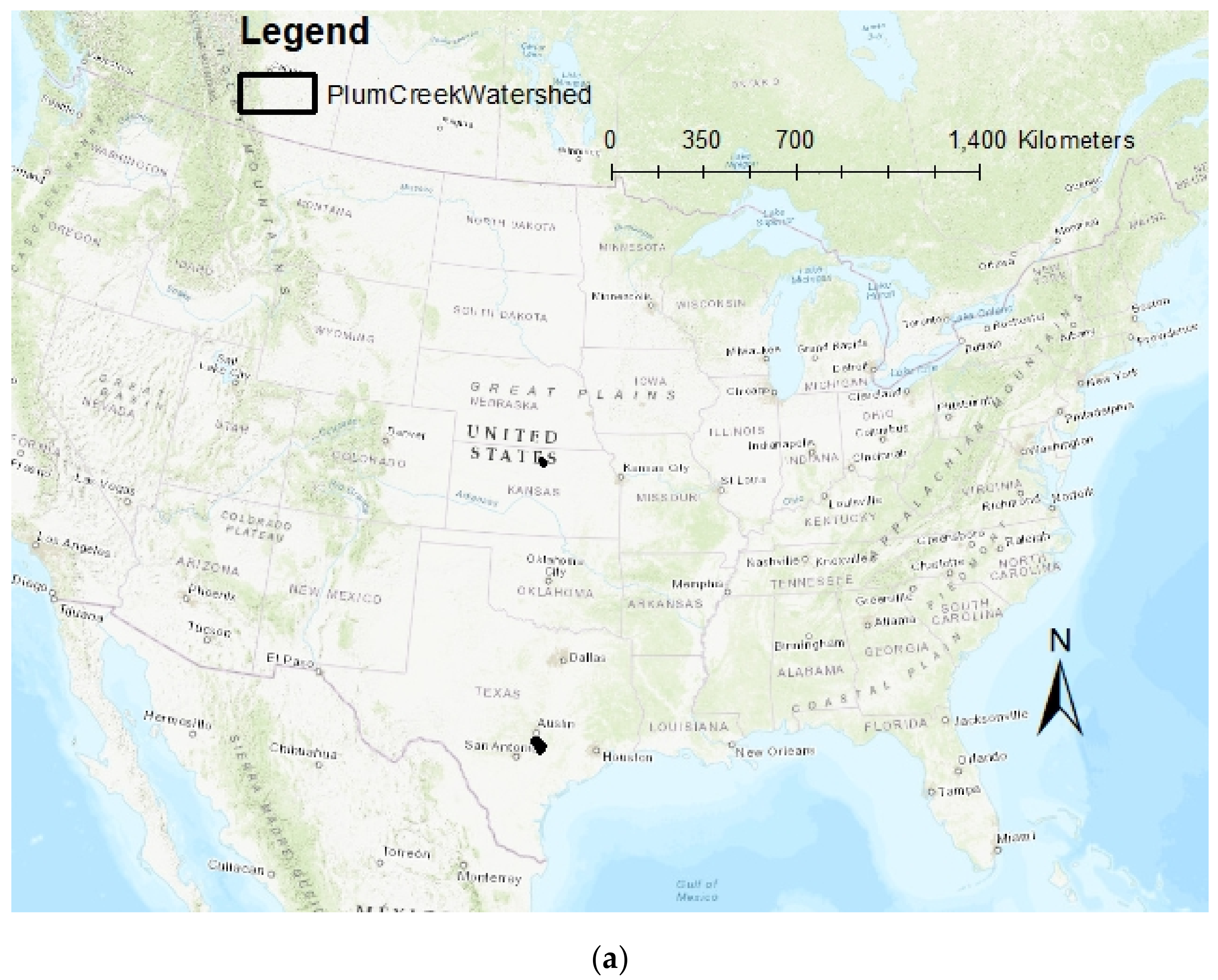
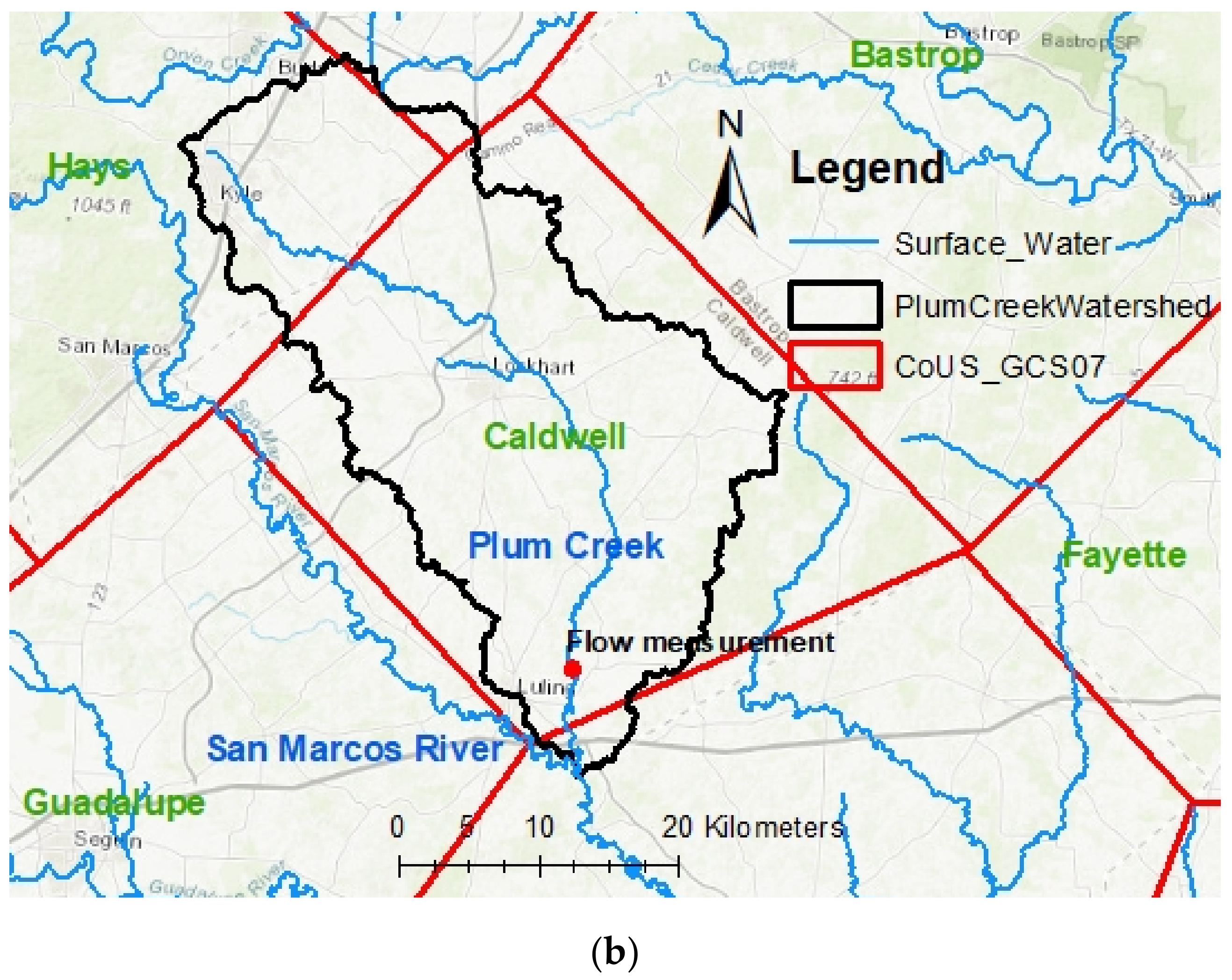
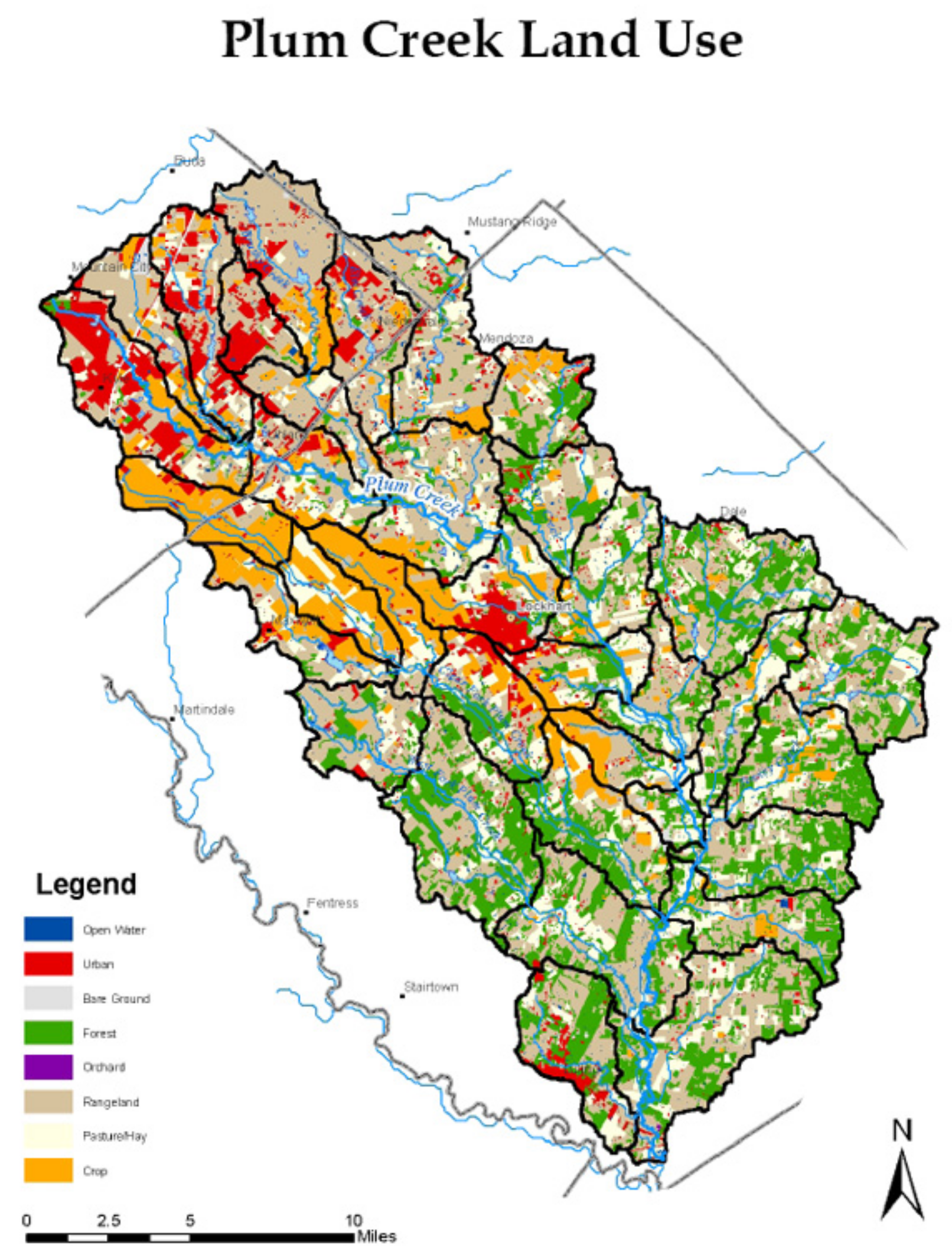
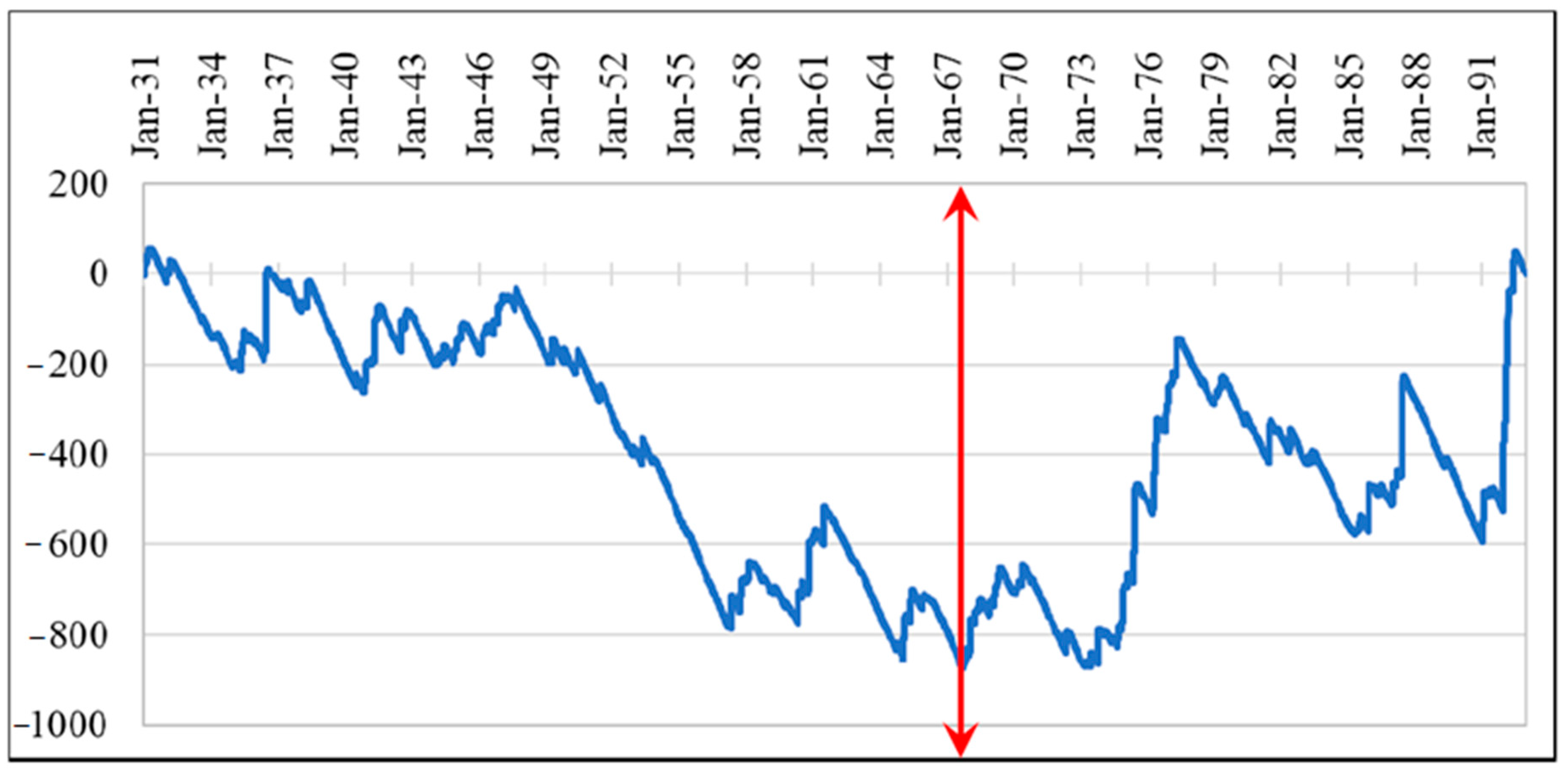
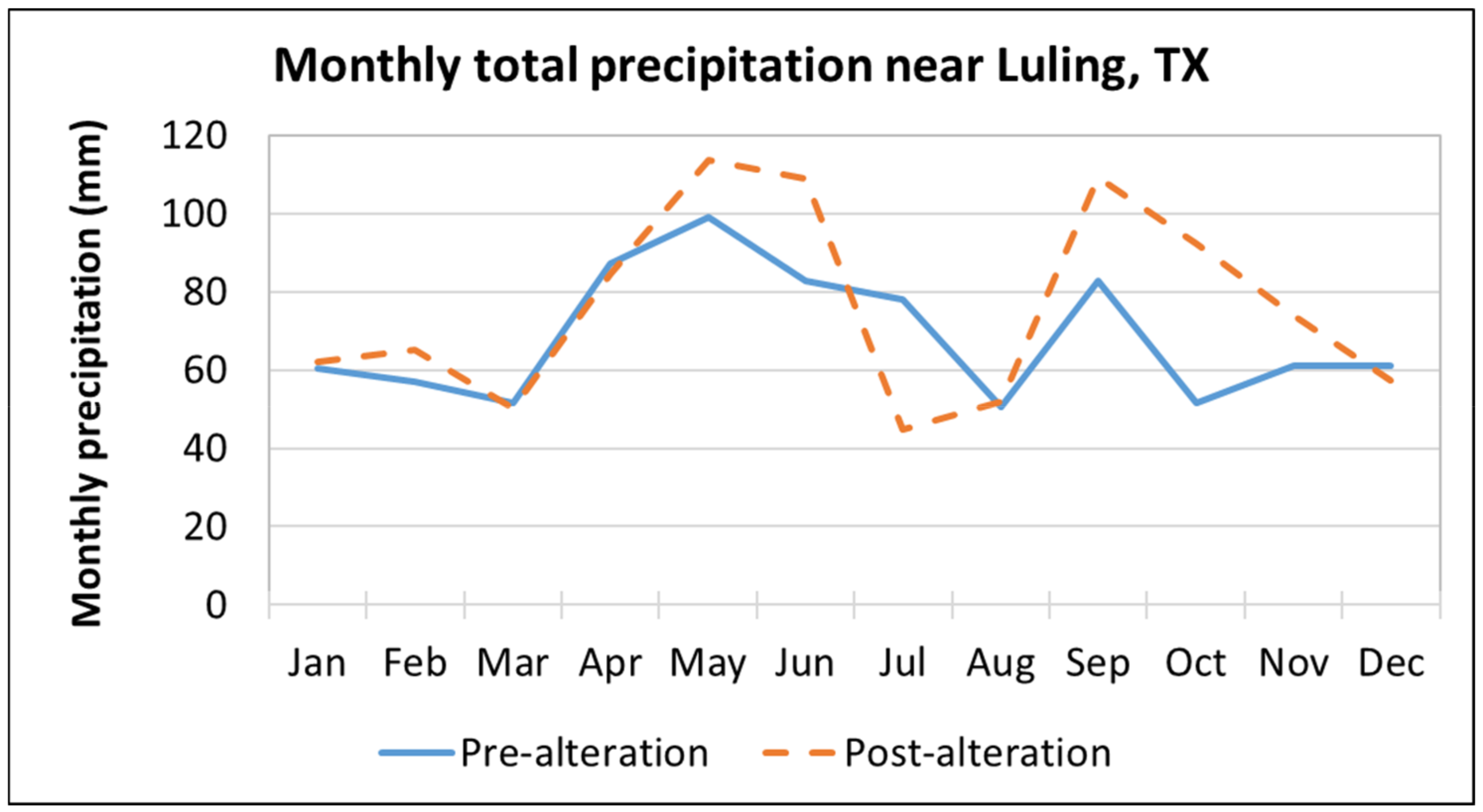
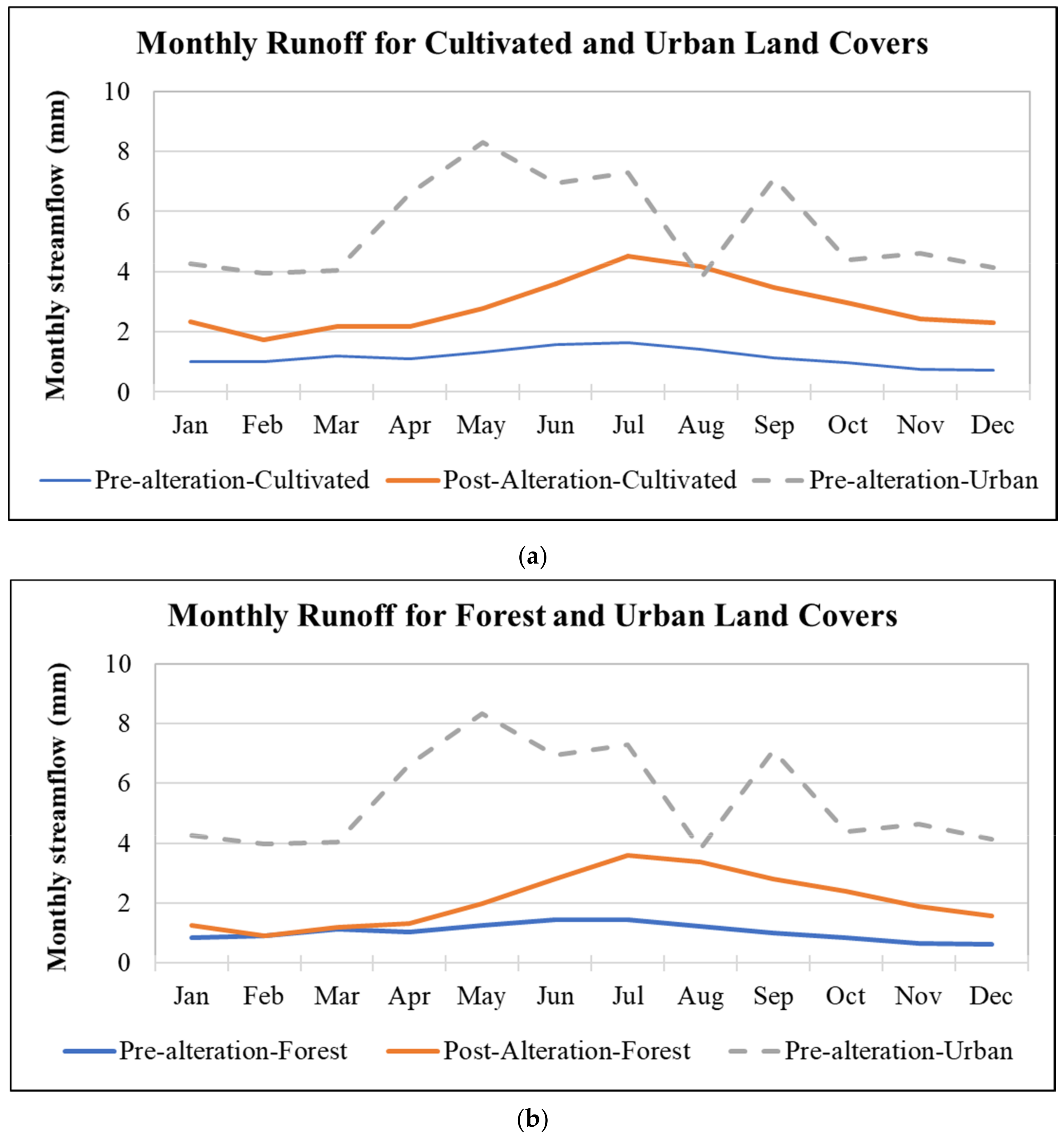
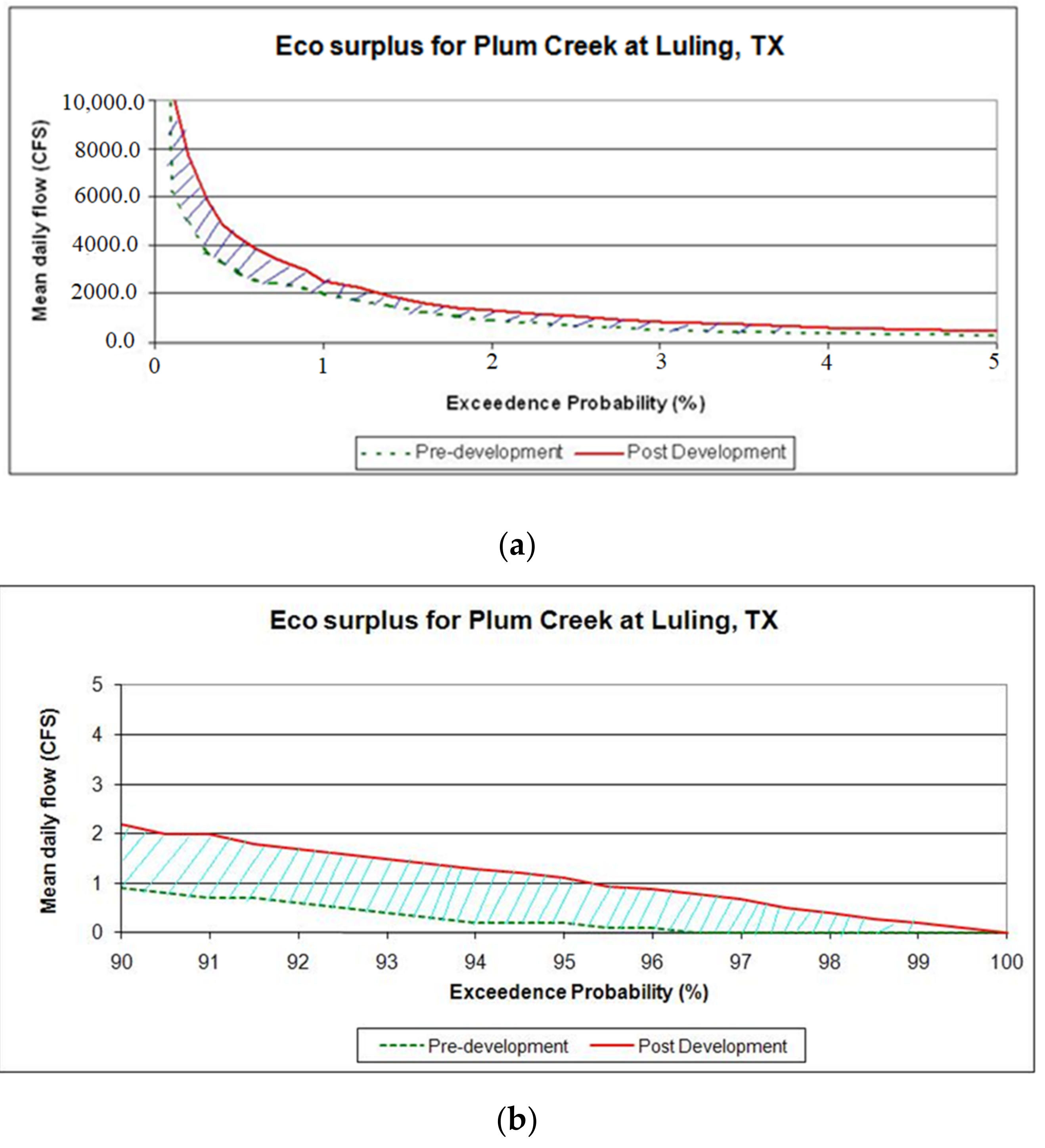
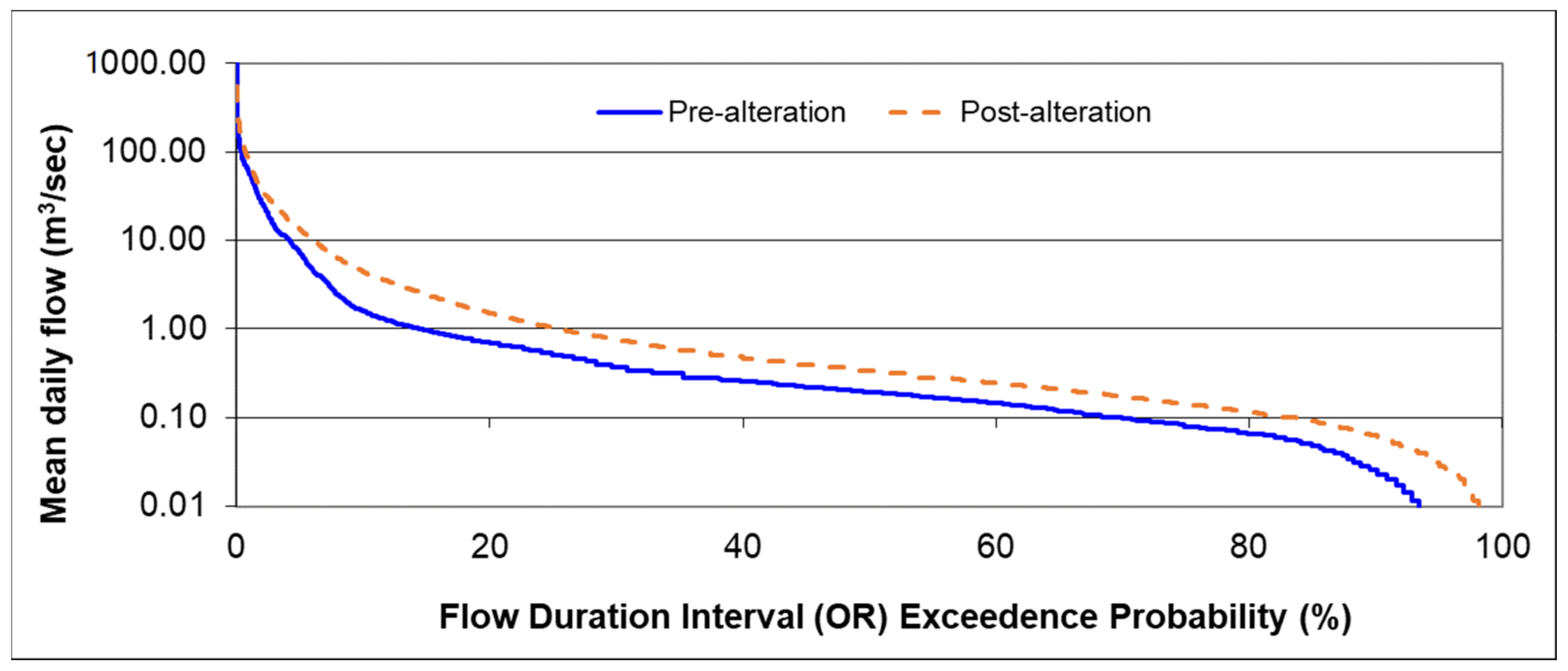
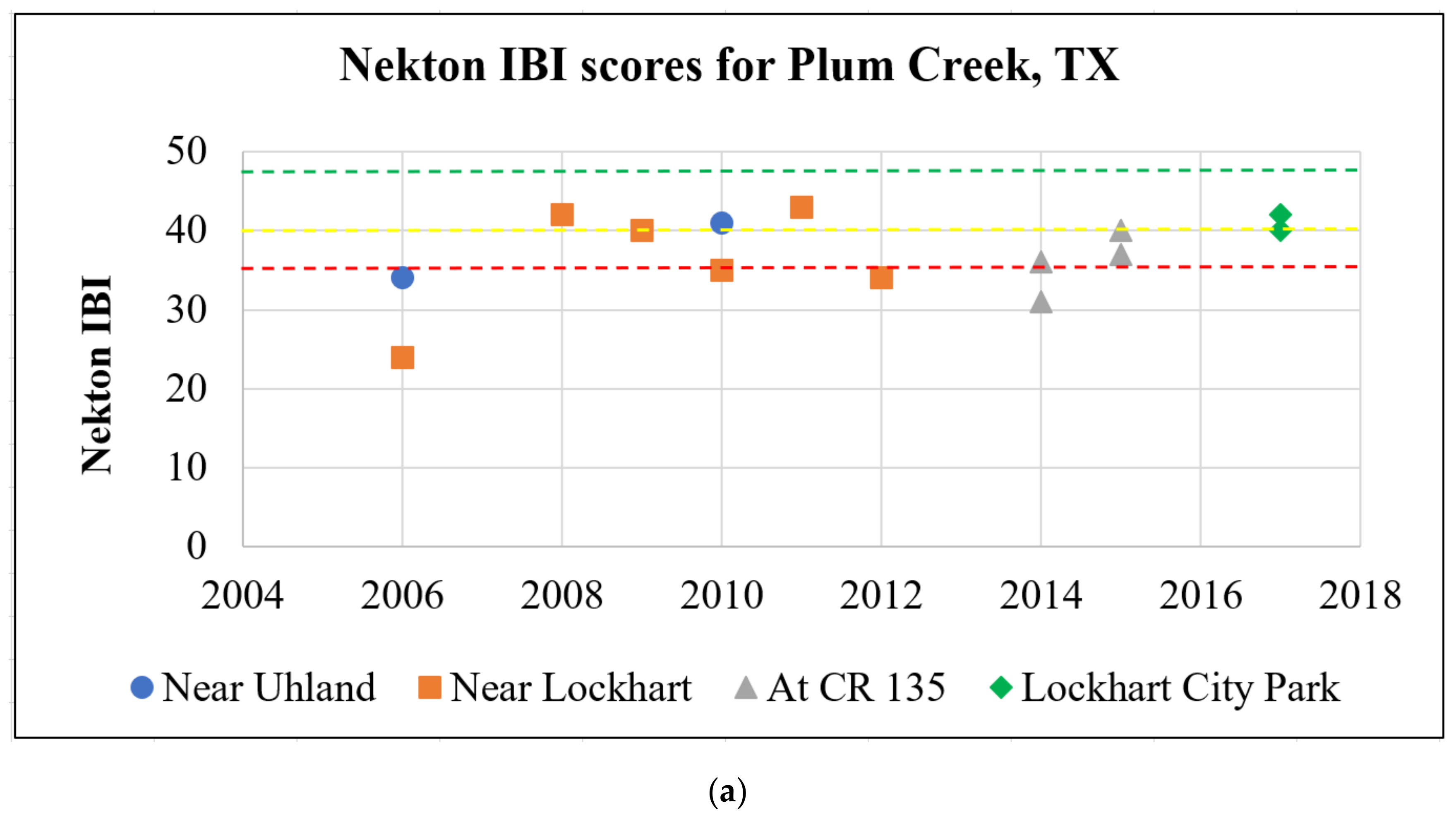

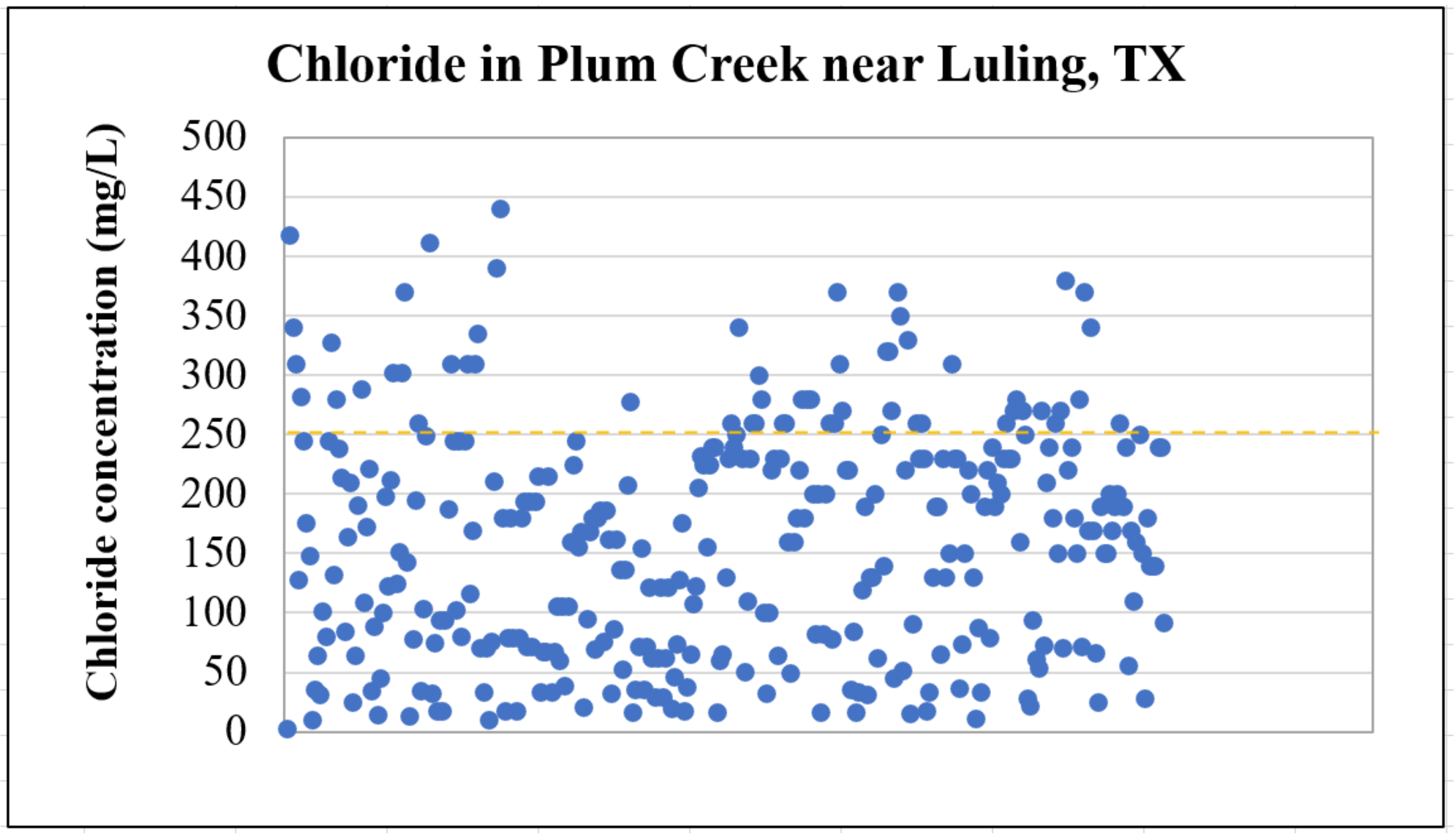
| Model | Strengths | Weakness |
|---|---|---|
| Hydrologic | Easy to use, free/inexpensive | Use flow alone as an indicator for all the ecological functions |
| Hydraulic | Use flow and channel geometry with habitat area | Does not account for other ecological functions affecting stream health |
| Habitat | Proven their value and legal credibility in the United States | Data intensive, complex |
| Holistic | Comprehensive stream health assessment, Agreed by multidisciplinary experts | Resource intensive and complex |
| Model | References | Strengths | Weakness |
|---|---|---|---|
| Indices of Hydrologic Alteration (IHA) | The Nature Conservancy, USA. [18] | Small gaps of missing flow data can be interpolated, allows the generation of both parametric and non-parametric statistics, identifies environmental flow parameters, batch processing possible | Large data gaps produce inaccurate results |
| National Hydrologic Assessment Tool (NATHAT) | United States Geological Survey (USGS). [19,20]. | Indices can be shortlisted by stream type from among the total of 171 indices, generates another eight indices based on annual peak flows, allows the generation of both parametric and non-parametric statistics, batch processing possible | Large data gaps produce inaccurate results, does not explicitly identify environmental flow parameters |
| Tennant Method | United States Fish and Wildlife Services. [12,13] | Pioneering and one of the widely used methods, Flow data can be divided into wet and dry seasons for analysis, Easy to use | Mainly developed for fish passing, Method developed exclusively based on Montana streams, Does not account for daily or annual flow variations |
| Range of Variability Approach (RVA) | Based on IHA [14,15]. | 33 Ecologically relevant parameters considered to identify flow alterations interpreted under 3 categories none-low (0–33%), medium (33–67%) and strong (>67%) | Considers only frequency of flow |
| Hydrologic Index | Value of Index | % Change | |
|---|---|---|---|
| Pre-Alteration | Post-Alteration | ||
| Benthic Macroinvertebrates | |||
| High Flow Duration Parameters (DH13, DH16, and DH24) | |||
| Mean of 30-day max discharge/med (DH13) | 1.98 | 1.79 | 9.7 |
| Variability in high flow pulse duration (DH16) | 3.20 | 2.11 | 34.0 |
| Flood free days (DH24) | 4.23 | 4.27 | 1.1 |
| High Flow Frequency Parameters (FH4, FH6, FH7) | |||
| High flood pulse count (FH4) | 1.1 | 1.5 | 35.9 |
| Flood frequency: 3 times mean daily flow (FH6) | 0.30 | 0.26 | 7.8 |
| Flood frequency: 7 times mean daily flow (FH7) | 0.32 | 0.25 | 21.7 |
| Riparian Vegetation | |||
| High Flow Frequency Parameters (FH4, FH6, FH7) Described above and the Following | |||
| Extreme High Flow (Q10) and Flood Plain Inundation (Q2) | |||
| 10-year flood (Q10) [m3/sec] | 342.6 | 489.2 | 42.8 |
| Two-year flood or bank-full storage (Q2) | 0.51 | 0.75 | 46.7 |
| High Flow Magnitude parameters (MH8, MH14, and MH23) | |||
| Mean monthly maximum flow for August (MH8) [m3/sec] | 20.0 | 35.3 | 76.1 |
| Median annual maximum (MH14) | 14.7 | 9.8 | 33.1 |
| Mean high flow (MH23) | 9.1 | 9.9 | 8.2 |
| Low Flow Magnitude parameters (ML14, ML16, and ML17) | |||
| Mean annual minimum (ML14) | 0.0 | 0.0 | 0.0 |
| Median annual minimum (ML16) | 0.0 | 0.0 | 0.0 |
| Base flow index (ML17) | 0.00085 | 0.00057 | 33.3 |
| Aquatic Species | |||
| High Flow Frequency Parameters (FH4, FH6, FH7) Described above Extreme High Flow (Q10) and Flood Plain Inundation (Q2) Described above High Flow Magnitude Parameters (MH8, MH14, and MH23) Described above Low Flow Magnitude Parameters (ML14, ML16, and ML17) Described above and the Following | |||
| Timing of Seasonal Flow Parameters (TA1, TA3, and TH3) | |||
| Constancy (TA1) | 0.0076 | 0.0074 | 3.7 |
| Seasonal predictability of flooding (TA3) | 0.011 | 0.0096 | 15.0 |
| Seasonal predictability of non-flooding (TH3) | 0.0054 | 0.0071 | 31.6 |
| Channel Erosion Potential | |||
| a Channel depth (d) [meters] | 0.99 | 1.22 | 23.1 |
| b 50-year flood (Q50) [m3/sec] | 0.19 | 0.34 | 73.9 |
| c Shear stress factor (SSF) | 1.53 | 2.32 | 51.4 |
| (a) | ||||||
|---|---|---|---|---|---|---|
| Stream Health Category | DHRAM Grouping | Average % Alteration | Impact Points | Total Impact | ||
| Means | CVs | Means | CVs | |||
| Aquatic species | Group 1 | 39.2 | 33.1 | 1 | 1 | 2 |
| Group 2 | 44.7 | 1 | 0 | 1 | ||
| Group 3 | 16.8 | 1 | 0 | 1 | ||
| Group 4 | 21.8 | 0 | 0 | 0 | ||
| Riparian vegetation | Group 1 | 39.2 | 33.1 | 1 | 1 | 2 |
| Group 2 | 44.7 | 1 | 0 | 1 | ||
| Group 4 | 21.8 | 0 | 0 | 0 | ||
| Macro-invertebrates | Group 4 | 15.3 | 34.0 | 0 | 1 | 1 |
| Channel degradation | Group 2 | 51.4 | 1 | 1 | 0 | 1 |
| (b) | ||||||
| Stream Health Component | Total Impact Points/Maximum | Re-Scaled Impact Points/DHRAM Maximum | Stream Health Estimation | |||
| Aquatic species | 4/15 | 8.0/30 | Moderately impaired | |||
| Riparian vegetation | 3/12 | 7.5/30 | Moderately impaired | |||
| Macro-invertebrates | 1/6 | 5.0/30 | Moderately impaired | |||
| Channel degradation | 1/3 | 10/30 | Moderately impaired | |||
| Stream Classification | Nekton IBI | Benthic IBI |
| Exceptional | ≥49 | >36 |
| High | 41 to 48 | 29 to 36 |
| Intermediate | 35 to 40 | 22 to 28 |
| Limited | <35 | <22 |
Publisher’s Note: MDPI stays neutral with regard to jurisdictional claims in published maps and institutional affiliations. |
© 2021 by the author. Licensee MDPI, Basel, Switzerland. This article is an open access article distributed under the terms and conditions of the Creative Commons Attribution (CC BY) license (http://creativecommons.org/licenses/by/4.0/).
Share and Cite
Kannan, N. Stream Health Estimation for the Plum Creek Watershed. Hydrology 2021, 8, 13. https://doi.org/10.3390/hydrology8010013
Kannan N. Stream Health Estimation for the Plum Creek Watershed. Hydrology. 2021; 8(1):13. https://doi.org/10.3390/hydrology8010013
Chicago/Turabian StyleKannan, Narayanan. 2021. "Stream Health Estimation for the Plum Creek Watershed" Hydrology 8, no. 1: 13. https://doi.org/10.3390/hydrology8010013
APA StyleKannan, N. (2021). Stream Health Estimation for the Plum Creek Watershed. Hydrology, 8(1), 13. https://doi.org/10.3390/hydrology8010013






